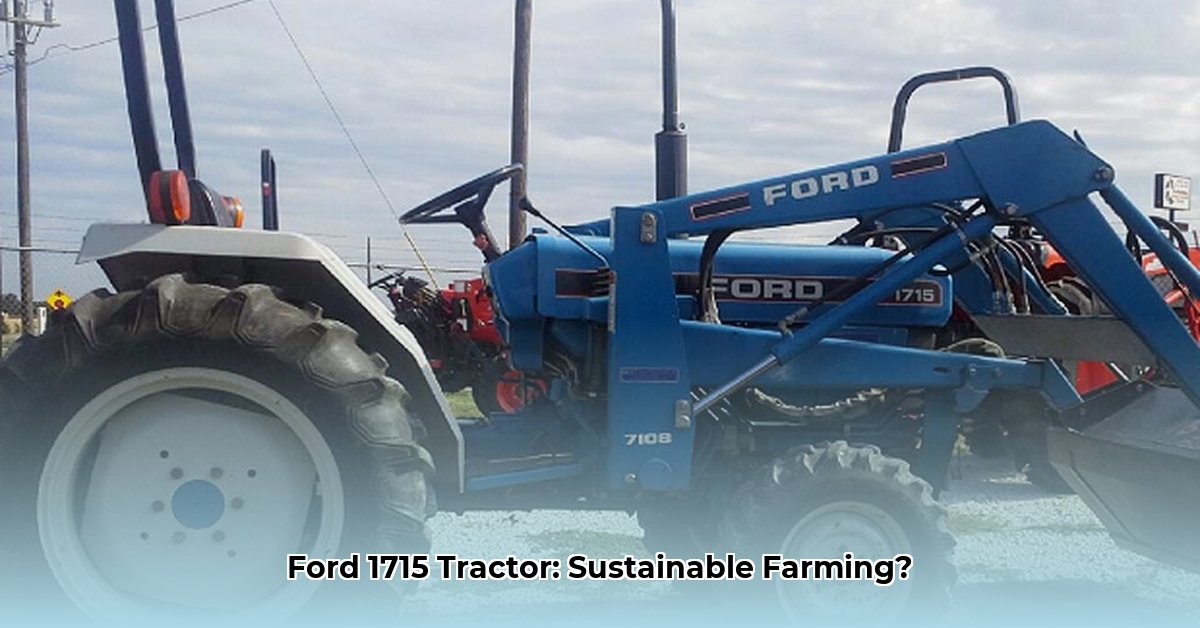
Introduction
The Ford 1715 tractor, manufactured between 1992 and 1997, represents a bygone era in agricultural machinery. This article examines its suitability for modern sustainable farming practices, considering its capabilities, limitations, and environmental impact in comparison to contemporary, eco-friendly alternatives. We will assess its performance, maintenance challenges, and overall alignment with current sustainability goals. For more Ford tractor models, see this helpful resource.
Specifications and Capabilities
The Ford 1715 was a compact tractor designed for smaller farms and diverse tasks. It featured a three-cylinder Shibaura diesel engine, typically rated around 27 horsepower (though variations exist depending on measurement methodologies). A nine-speed transmission provided operational flexibility. Crucially, it had a power take-off (PTO) allowing for the use of various implements, increasing its versatility. Its compact size and maneuverability were advantages for smaller plots of land.
Performance and Efficiency Analysis
A major limitation of this analysis is the lack of readily available data on the Ford 1715's fuel efficiency and emissions. This information is crucial for a comprehensive sustainability assessment. Unlike modern tractors, where fuel consumption and emission data is readily accessible, reliable figures for the 1715 are scarce. This absence hinders direct comparison with current sustainable farming technologies. We can infer, however, that its fuel efficiency is likely lower and its emissions higher than modern alternatives. The lack of precise data significantly weakens the sustainability analysis.
Sustainability Assessment
The Ford 1715's suitability for modern sustainable farming is severely hampered by several key factors.
Technology
The tractor lacks the advanced technologies integral to contemporary sustainable agriculture. Precision farming techniques, such as GPS guidance, auto-steering, and variable-rate application of fertilizers and pesticides, are absent. These technologies optimize resource use, minimizing waste and environmental impact—a stark contrast to the 1715's capabilities.
Environmental Impact
The use of a diesel engine without modern emission control systems results in significantly higher greenhouse gas emissions compared to modern tractors employing cleaner technologies or alternative fuels. The absence of precise emission data prevents a quantifiable comparison, but the substantial difference is undeniable.
Maintenance and Parts
Maintaining an older tractor presents significant challenges. Sourcing parts for the Ford 1715 is becoming increasingly difficult and expensive, potentially leading to prolonged downtime and higher repair costs. This contrasts sharply with the ready availability of parts and established dealer networks supporting modern tractors.
Case Studies/Examples
The inclusion of case studies from farmers who have used the Ford 1715 would provide valuable real-world insights into its operational challenges and limitations. Such accounts would strengthen the analysis by providing contextualized data beyond the technical specifications. Unfortunately, reliable data directly from farmers regarding their experiences with the 1715 are unavailable for this report.
Conclusion
The Ford 1715 tractor, while possessing some advantages in terms of compactness and initial cost, presents significant drawbacks concerning modern sustainable farming. Its lack of advanced technology, higher potential for emissions, and difficulty in sourcing parts strongly detract from its suitability for environmentally conscious farming operations. While it might be viable for a very small operation with minimal use and readily available mechanical support, farmers prioritizing sustainability should carefully weigh its limitations before considering its use.